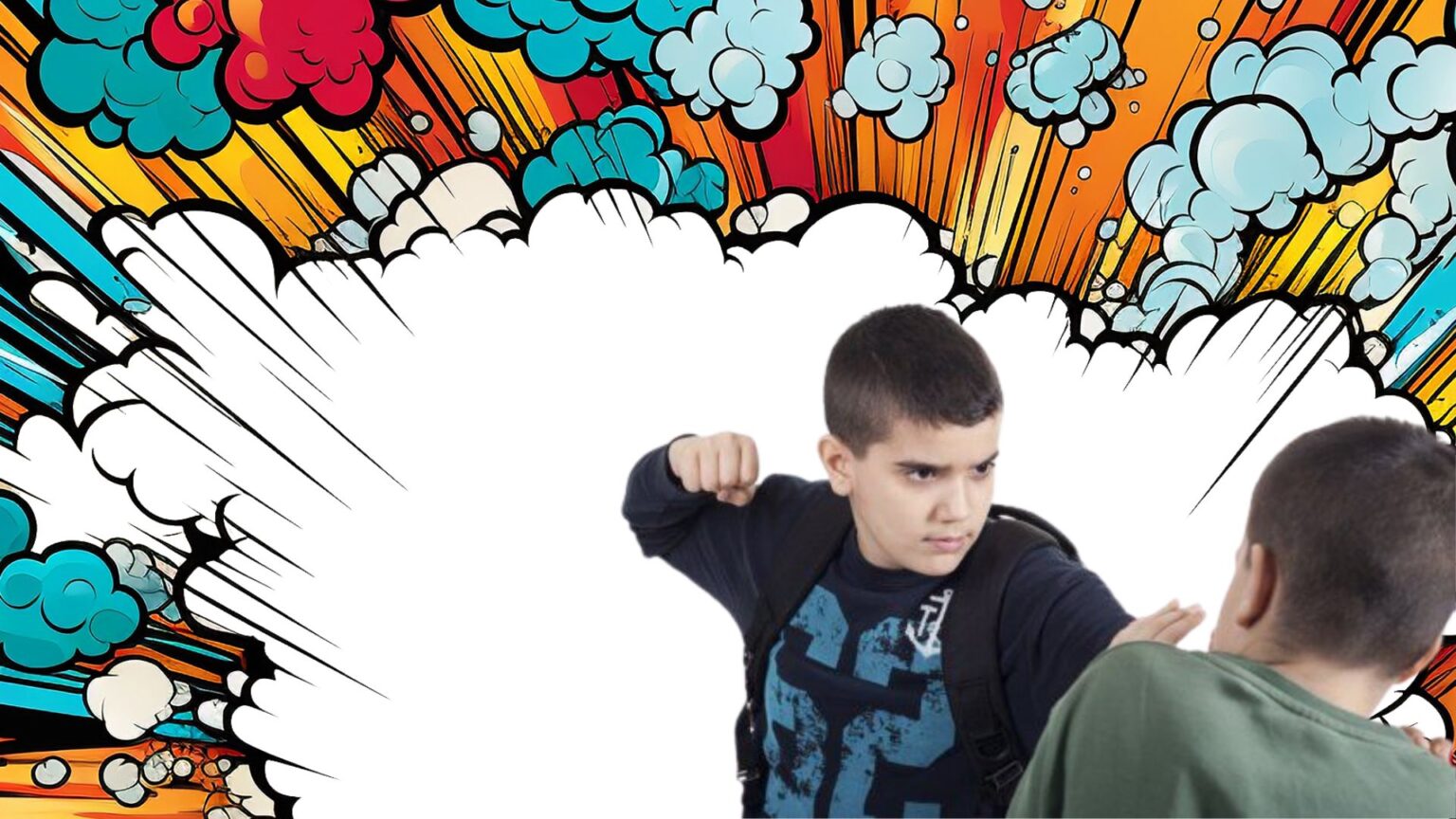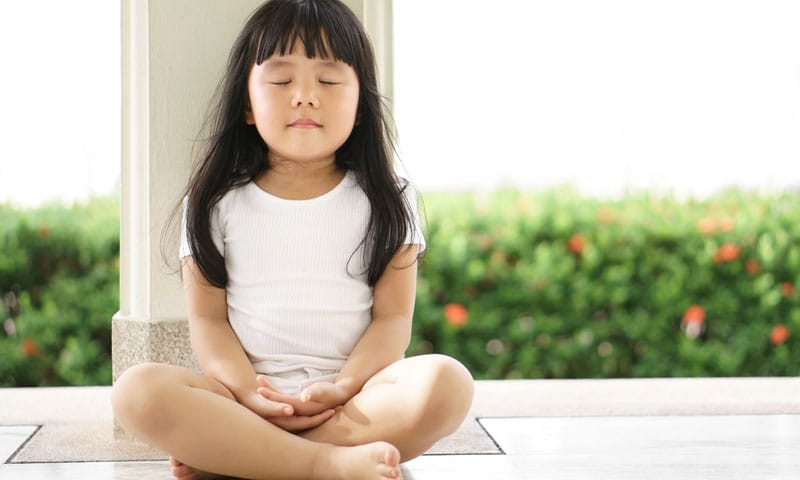Understanding the Surge in Childhood Aggression: Why Mental Health Matters
In recent years, childhood aggression has become an increasingly concerning issue for parents, teachers, and mental health professionals alike. Once seen as a phase of normal childhood development, frequent outbursts, physical confrontations, and emotional hostility are now being recognized as potential signs of deeper mental health struggles.
According to a 2022 report by the World Health Organization (WHO), cases of childhood aggression have risen by nearly 30% globally in the past decade, with more children exhibiting intense, persistent, and disruptive behaviors. This surge has prompted experts to examine the underlying psychological causes rather than merely addressing surface-level symptoms.
Childhood aggression can manifest in various forms, ranging from physical violence—such as hitting, kicking, or destroying property—to verbal aggression through insults, shouting, or threats. Less visible but equally damaging is relational aggression, which involves social exclusion, spreading rumors, or manipulating friendships.
For example, a seven-year-old frequently pushing peers on the playground may be exhibiting physical aggression, whereas a ten-year-old deliberately isolating a classmate reflects relational hostility. Both behaviors, while different in form, can indicate underlying emotional distress.
Research published in the Journal of Child Psychology and Psychiatry highlights that children with undiagnosed mental health issues are three times more likely to display chronic aggression.
Decoding Childhood Aggression: Types, Triggers, and When to Be Concerned
Childhood aggression is a multifaceted behavior that can take different forms, each with its own triggers and consequences. While occasional frustration is part of normal child development, persistent or intense aggression can signal deeper emotional or mental health challenges. Recognizing the different types of aggression and identifying common triggers is essential for parents and educators to implement effective interventions.
For instance, a six-year-old who punches a peer after losing a game may be expressing frustration physically rather than through words. While occasional physical outbursts are developmentally normal in younger children, repeated and intense physical aggression—especially in older children—can indicate emotional dysregulation or underlying behavioral issues.
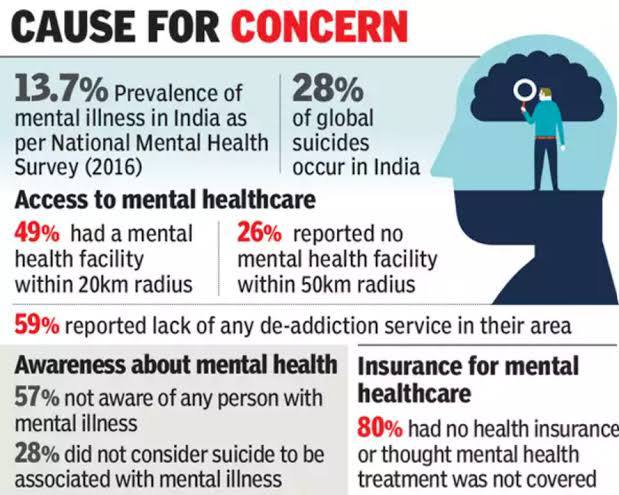
The image highlights the alarming state of mental healthcare in India, revealing limited access to facilities, low awareness, and inadequate insurance coverage for mental health treatment.
Verbal aggression, though less overt, can be equally harmful. It includes yelling, name-calling, mocking, or making threats. Children who struggle with self-regulation may use harsh words to express their emotional discomfort. For example, a child who frequently shouts insults at classmates when frustrated might be using verbal aggression as a coping mechanism.
Relational aggression is more subtle but can be profoundly damaging. It involves manipulating social relationships to harm others, such as spreading rumors, excluding peers, or engaging in passive-aggressive behaviors. According to research published in the Journal of Abnormal Child Psychology, relational aggression is strongly linked to internalizing issues such as anxiety and depression in both the aggressor and the victim.
Several common triggers can provoke aggression in children. Frustration due to an inability to express emotions—especially in younger children with limited communication skills—often results in physical or verbal outbursts. Similarly, overstimulation, fatigue, or sensory overload can lead to irritability and aggression. Children also model behavior they observe, meaning exposure to aggressive interactions in the family, media, or peer groups can normalize hostility.
The Hidden Connection: How Mental Health Influences Childhood Aggression
Childhood aggression is often viewed as a disciplinary issue, but mounting scientific evidence reveals that mental health disorders are frequently at its core. Conditions such as anxiety, depression, ADHD, and oppositional defiant disorder (ODD) can significantly influence a child’s emotional regulation, impulse control, and frustration tolerance—leading to aggressive outbursts.
Anxiety disorders, although commonly associated with fear and avoidance, can also manifest as aggression.For example, a child with social anxiety may push or yell at peers when feeling cornered or judged. According to a 2019 study published in the Journal of Child and Adolescent Psychiatry, children with untreated anxiety are twice as likely to exhibit aggressive behaviors as a coping mechanism.
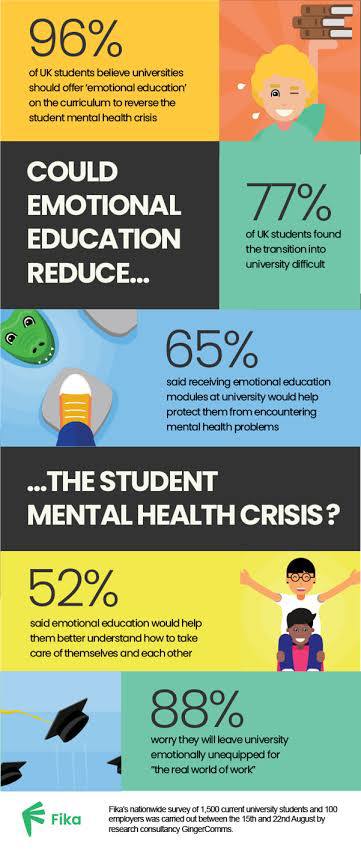
The image emphasizes the need for emotional education in UK universities, as students believe it could help reduce mental health issues and better prepare them for real-world challenges.
Depression, despite its association with sadness, can also trigger irritability and aggression in children.For example, a child experiencing depressive symptoms may become easily frustrated over minor issues, escalating into shouting or physical aggression. Research published in the Journal of Affective Disorders highlights that children with depressive disorders are 2.7 times more likely to engage in aggressive behavior, especially if their depression is accompanied by mood instability.
Attention-Deficit/Hyperactivity Disorder (ADHD) is another condition strongly linked to childhood aggression. The impulsivity, emotional dysregulation, and frustration intolerance characteristic of ADHD can lead to frequent outbursts. A meta-analysis in the Journal of Abnormal Child Psychology found that children with ADHD are four times more likely to engage in aggressive behaviors than their neurotypical peers.
Oppositional Defiant Disorder (ODD) is perhaps the most overtly linked to chronic aggression. For example, a child with ODD may purposely provoke teachers or peers and become physically or verbally aggressive when challenged. According to a 2021 study in the Journal of Clinical Child Psychology, up to 68% of children with ODD demonstrate regular aggression, making early intervention essential.
Recognizing the link between mental health and aggression is vital for effective intervention. By addressing these mental health conditions through therapy, emotional regulation strategies, and support systems, caregivers can help children develop healthier coping mechanisms, reducing the frequency and intensity of aggressive episodes.
The Environmental and Social Triggers Behind Childhood Aggression
While mental health conditions play a significant role in childhood aggression, environmental and social factors often act as catalysts, intensifying aggressive tendencies. Family dynamics, peer interactions, and media exposure significantly shape children’s emotional regulation and behavioral responses. When these influences become unstable or negative, children may adopt aggression as a coping mechanism or a learned behavior.
Family environment is one of the most powerful influences on childhood behavior. According to a 2020 study published in the Journal of Family Psychology, children from high-conflict households are 50% more likely to display aggressive behavior compared to those from stable environments.
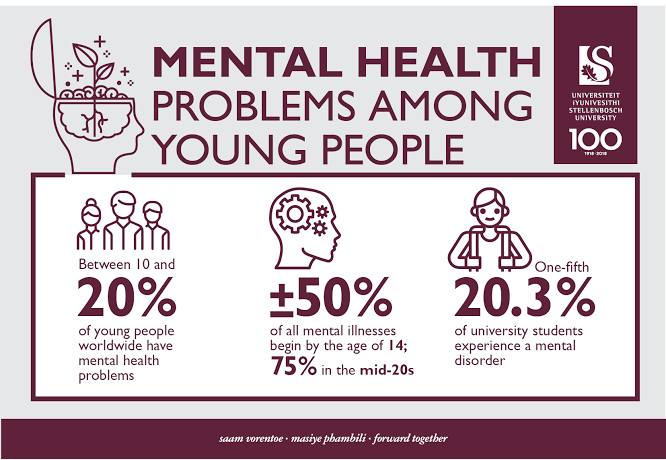
The image highlights the prevalence of mental health issues among young people, revealing that many disorders begin early, with 20.3% of university students experiencing a mental disorder.
Peer influence and bullying also contribute significantly to childhood aggression. Children who are bullied often exhibit reactive aggression, lashing out in defense or frustration. For example, a child who is constantly teased or excluded may eventually retaliate with physical or verbal aggression.
A meta-analysis published in the American Psychological Association journal revealed that children who regularly consume violent media exhibit higher levels of aggression, both in behavior and thought patterns. Prolonged exposure can also diminish empathy, making children less sensitive to the consequences of their actions.
The Neurobiology and Genetics Behind Childhood Aggression
Childhood aggression is not merely a product of environment or mental health—it is also deeply influenced by neurobiological and genetic factors. Scientific research reveals that brain chemistry, hormonal imbalances, and genetic predispositions can significantly impact a child’s capacity for emotional regulation and impulse control, making them more prone to aggressive behaviors. Understanding these biological underpinnings is essential for developing targeted interventions.
The brain plays a central role in regulating aggression, with the amygdala and prefrontal cortex being the primary regions involved. The amygdala, responsible for processing emotions such as fear and anger, becomes hyperactive in aggressive individuals.
Hormonal influences also play a significant role in childhood aggression. Testosterone, the hormone linked to dominance and assertiveness, has been associated with increased aggression when present in higher levels. For instance, a 2018 study in the journal Conversely, low cortisol levels—the stress hormone—have been linked to impulsive aggression.
Genetic predisposition also plays a crucial role in childhood aggression. Research suggests that certain genetic markers, such as variations in the MAOA gene, are linked to aggressive behavior. Known as the “warrior gene,” MAOA regulates neurotransmitters like dopamine and serotonin, which influence mood and impulsivity.
A twin study published in Development and Psychopathology found that genetic factors accounted for nearly 50% of aggressive tendencies in children, highlighting the hereditary component of aggressive behavior.
Recognizing the Early Warning Signs of Childhood Aggression
Identifying the early signs of childhood aggression is crucial for timely intervention, as unchecked behavioral issues can escalate into more severe emotional and social challenges.
While occasional tantrums or mood swings are part of normal childhood development, frequent or intense aggressive behaviors may signal underlying emotional distress or mental health concerns. Recognizing these behavioral, social, and emotional indicators allows parents and educators to provide the necessary support before aggression becomes deeply ingrained.
Behavioral indicators are often the first visible signs of aggression. Frequent temper tantrums, emotional outbursts, or defiance that go beyond typical childhood frustration may signal deeper emotional struggles. For instance, a child who repeatedly throws objects or hits others when denied a request is displaying aggression beyond the usual testing of boundaries.
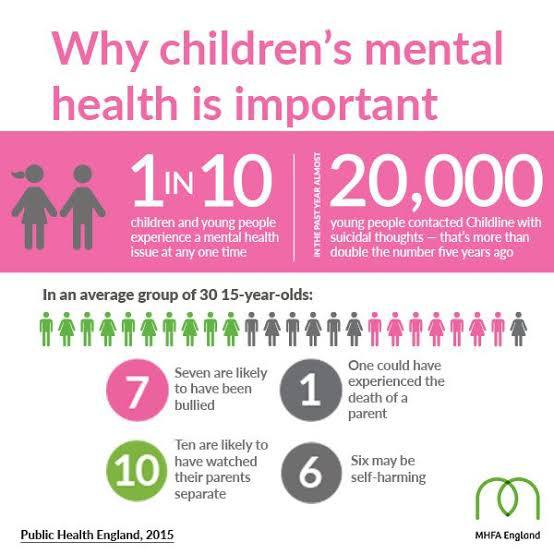
The image emphasizes the importance of children’s mental health, showing that 1 in 10 children experience mental issues, and many face bullying, self-harm, or family-related trauma.
Children with aggression issues often struggle to manage frustration or resolve conflicts calmly, resorting to physical or verbal hostility. According to a study published in the Journal of Abnormal Child Psychology, persistent emotional outbursts in children under 10 can be predictive of future conduct disorders if left unaddressed.
Social signs of aggression often manifest through relationship difficulties. Children prone to aggression frequently experience peer rejection due to their unpredictable or hostile behavior. For example, a child who consistently intimidates classmates may find themselves excluded from social groups, leading to further isolation.
Emotional signs provide deeper insights into the internal struggles driving aggression. Persistent irritability, sadness, or anxiety often underlie outwardly aggressive behavior. For example, a child who frequently snaps at teachers or classmates may be masking underlying anxiety or depression.
Moreover, a lack of remorse or empathy after aggressive incidents can indicate emotional desensitization, which may require professional intervention. According to a 2021 study in the Journal of Child Psychology and Psychiatry, children with chronic aggression often show reduced empathy over time, making it harder for them to recognize the emotional impact of their actions.
The Far-Reaching Impact of Childhood Aggression on Academic and Social Development
Childhood aggression does not occur in isolation—it ripples across every aspect of a child’s life, affecting their academic performance, social relationships, and family dynamics. The disruptive nature of aggressive behaviors often interferes with classroom learning, hinders social integration, and strains familial bonds.
The impact on academic performance is one of the most immediate and visible consequences of childhood aggression. Disruptive behaviors—such as defiance, outbursts, or physical aggression—can interrupt classroom activities and reduce valuable instructional time. For example, a child prone to frequent angry outbursts may be removed from class or sent to the principal’s office, missing essential lessons.
Social consequences are equally profound, as aggression damages peer relationships and fosters isolation. Children who frequently display aggressive behaviors are often rejected by their peers, making it harder for them to form meaningful friendships. For instance, a child who pushes or intimidates others on the playground may become ostracized, reducing their opportunities for social development.
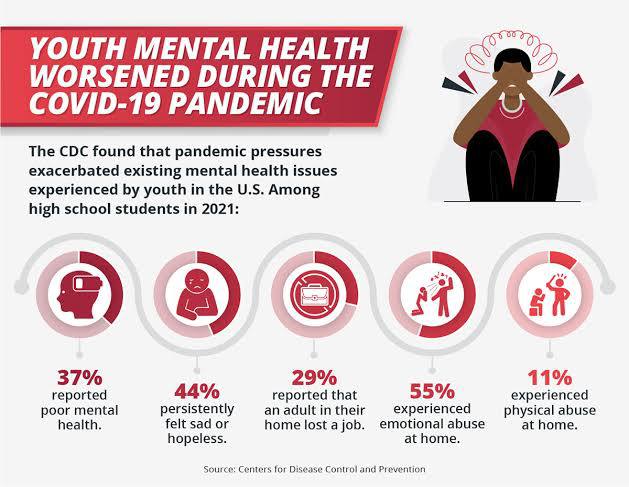
The image reveals how the COVID-19 pandemic worsened youth mental health in the U.S., with students reporting increased emotional abuse, sadness, and job loss impacts at home.
The impact on family dynamics is also significant, as aggressive behavior often strains parent-child relationships and disrupts household harmony. Parents of aggressive children frequently experience emotional exhaustion, frustration, and feelings of helplessness. For example, constant disciplinary conflicts can create emotional distance between parents and children, weakening their bond.
Addressing the academic, social, and familial consequences of childhood aggression is essential for the child’s overall well-being. By implementing targeted interventions—such as emotional regulation programs, counseling, and social skills training—educators and families can help children develop healthier behavioral patterns, fostering better academic outcomes, stronger relationships, and emotional resilience.
Effective Strategies for Parents and Teachers to Manage Childhood Aggression
Helping children overcome aggressive tendencies requires a combination of emotional support, consistent discipline, and social skill development. Both parents and teachers play a pivotal role in shaping children’s emotional regulation and behavioral patterns. By promoting coping strategies, enforcing clear boundaries, and encouraging empathy, caregivers can effectively guide children toward healthier emotional responses and conflict resolution skills.
Research published in the Journal of Developmental Psychology indicates that children who regularly practice mindfulness exercises display lower levels of impulsivity and aggression.
Moreover, validating children’s emotions rather than dismissing them encourages emotional literacy. For example, instead of saying, “Stop being angry,” a parent or teacher could say, “I understand you’re frustrated. Let’s talk about what made you feel this way.” This approach helps children label and express their feelings verbally, reducing the likelihood of aggressive outbursts.
On the other hand, setting firm but fair boundaries ensures that children understand the consequences of aggression. If a child hits a peer, imposing a logical consequence—such as temporarily removing them from a group activity—teaches accountability. According to a study published in Child Development, consistent and predictable consequences reduce the frequency of aggressive behaviors by promoting self-discipline and impulse control.
Encouraging social skills through guided activities can also help children develop empathy and improve their conflict resolution abilities. Role-playing scenarios that involve sharing, turn-taking, or resolving disputes allows children to practice handling conflicts constructively. For example, teachers can organize group exercises where children discuss how to handle teasing or frustration, helping them recognize non-violent solutions. .
By combining emotional regulation techniques, consistent discipline, and empathy-building activities, parents and teachers can create a supportive environment that reduces aggression and promotes healthier emotional expression.
FAQs on The Rise of Childhood Aggression – Understanding the Underlying Mental Health Causes
What is childhood aggression, and how does it differ from normal childhood behavior?
Childhood aggression refers to persistent patterns of hostile or violent behavior, such as physical violence, verbal outbursts, or social exclusion. While occasional frustration or temper tantrums are normal in children, frequent, intense, and harmful aggression—especially when it disrupts social, academic, or family life—may indicate a deeper mental health issue.
What are the common mental health conditions linked to childhood aggression?
Anxiety disorders, depression, ADHD, and Oppositional Defiant Disorder (ODD) are some of the most common mental health conditions associated with childhood aggression. Anxiety and depression can manifest as irritability and emotional outbursts, while ADHD and ODD often lead to impulsive, defiant, or hostile behavior.
How does anxiety contribute to childhood aggression?
Children with anxiety disorders may display aggression as a defense mechanism when they feel overwhelmed. For instance, a child who feels anxious about social interactions may lash out to avoid perceived threats. Research indicates that children with anxiety are more likely to exhibit reactive aggression when feeling cornered or stressed.
Can depression lead to aggressive behavior in children?
Yes, while depression in adults typically presents as sadness or withdrawal, children with depression often display irritability, frustration, and aggression. Mood disorders can lower emotional tolerance, making children prone to outbursts in response to minor frustrations.
Is ADHD linked to aggressive tendencies in children?
Yes, children with ADHD are more prone to impulsivity and emotional dysregulation, which can lead to aggressive behavior. Their difficulty in managing frustration and impulsively reacting to conflicts makes them more likely to exhibit aggression.
How does ODD contribute to childhood aggression?
Oppositional Defiant Disorder (ODD) is characterized by chronic defiance, hostility, and irritability toward authority figures. Children with ODD often display aggressive and vindictive behaviors, frequently engaging in arguments or deliberately annoying others.
Are environmental factors significant in childhood aggression?
Yes, family conflict, parental inconsistency, peer bullying, and media exposure can significantly influence childhood aggression. For example, children exposed to frequent parental arguments may develop hostile behaviors, while bullying victims may become aggressive in response.
How does exposure to media violence impact children’s aggression?
Frequent exposure to violent video games, movies, or TV shows can desensitize children to violence and increase aggressive tendencies. Studies show that children who regularly consume violent media are more likely to display aggressive thoughts, behaviors, and reduced empathy.
What are the early warning signs of aggressive tendencies in children?
Frequent temper tantrums, impulsive outbursts, and difficulty managing frustration are early warning signs. Social withdrawal, trouble forming friendships, and lack of empathy after hurting others can also indicate emerging aggressive tendencies.
How does childhood aggression impact academic performance?
Aggression can disrupt classroom activities, reduce focus, and lead to disciplinary actions, affecting academic performance. Frequent aggressive incidents may result in missed instructional time and hinder learning, contributing to lower grades.
What social consequences do aggressive children face?
Children who frequently display aggression are often rejected by their peers, leading to social isolation and difficulty forming friendships. This peer rejection can negatively impact their self-esteem and emotional well-being, increasing their risk of depression or anxiety.
How can parents help children manage aggressive behavior?
Parents can teach emotional regulation skills, such as deep breathing and verbal expression of feelings, to help children manage frustration. Consistent discipline, positive reinforcement, and modeling calm conflict resolution also promote healthier behavioral responses.
What role do teachers play in addressing childhood aggression?
Teachers can create structured and emotionally supportive environments to reduce triggers for aggression. Classroom-based social-emotional learning (SEL) programs teach conflict resolution skills, while consistent discipline strategies provide clear boundaries and consequences.
What mental health interventions are effective for childhood aggression?
Cognitive Behavioral Therapy (CBT) helps children recognize and manage aggressive impulses by changing negative thought patterns. Play therapy is effective for younger children, while family counseling supports parents in managing their child’s behavior.
Are school-based mental health programs beneficial in reducing childhood aggression?
Yes, school-based counseling services and emotional wellness programs offer children access to mental health support in a familiar setting. These programs teach emotional regulation skills and provide interventions for children exhibiting chronic aggression.
Can childhood aggression have long-term consequences if left untreated?
Yes, untreated childhood aggression can lead to chronic behavioral issues, academic struggles, and difficulties in forming healthy relationships. It may also increase the risk of mental health conditions in adulthood, such as depression, anxiety, or antisocial behaviors.
How does brain chemistry influence childhood aggression?
Imbalances in neurotransmitters, such as serotonin and dopamine, can contribute to aggressive behavior. Overactivity in the amygdala (the brain’s fear center) and reduced activity in the prefrontal cortex (responsible for impulse control) are also linked to aggression.
Can genetic factors contribute to childhood aggression?
Yes, genetic predisposition plays a role in aggressive tendencies. Twin studies suggest that children with family histories of aggression or mental health disorders are more likely to display aggressive behaviors themselves.
How can schools promote empathy and reduce aggression?
Schools can integrate empathy-building activities into the curriculum, such as collaborative projects, peer mediation programs, and role-playing exercises. These activities teach children conflict resolution skills and foster emotional awareness.
Why is early intervention crucial in managing childhood aggression?
Early intervention prevents aggressive behaviors from escalating into chronic issues. By identifying and addressing aggression early through therapy, parental support, and school interventions, children can develop healthier emotional regulation skills, improving their long-term mental health and social outcomes.
Call to Action: Prioritizing Mental Health to Curb Childhood Aggression
As childhood aggression continues to rise, it is essential for parents, teachers, and mental health professionals to recognize the underlying mental health causes fueling this behavior. Rather than viewing aggression as mere misbehavior, it must be understood as a potential cry for help—often rooted in anxiety, depression, trauma, or emotional distress.
By adopting a compassionate, proactive approach, we can create environments where children feel emotionally safe, understood, and supported. Schools must prioritize mental health education, while parents should encourage open communication and emotional expression at home.
It is equally important for governments and institutions to expand access to mental health services for children, ensuring early intervention and support. Ultimately, by addressing the mental health factors driving childhood aggression, we can foster kinder, more emotionally resilient future generations, creating a world where children feel empowered to express their emotions constructively, rather than through violence.

